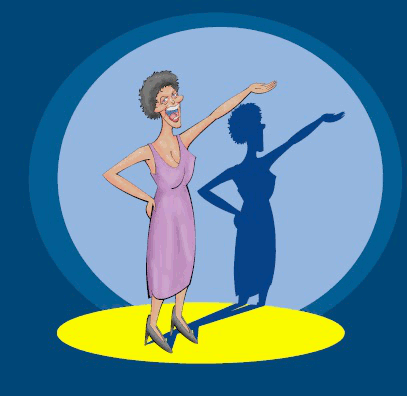Lena Horne

(Click to Zoom In and Out)
On March 31, 1776, Abigail Adams wrote to her husband John who was in Philadelphia. Knowing how things had shaken out in the past, Abigail cautioned John who was helping to craft the laws of the proposed new nation:
I desire you would remember the ladies and be more generous and favorable to them than your ancestors. If particular care and attention is not paid to the ladies, we are determined to foment a rebellion, and will not hold ourselves bound by any laws in which we have no voice or representation."
To which John replied:
As to your extraordinary Code of Laws, I cannot but laugh.
So lest we fall susceptible to the criticism leveled at John and his Fellow Founding Fathers, we are remembering the ladies.
In particular we are remembering one lady, the singer and performer of stage and screen, Lena Horne. Given Lena's presence in popular entertainment, a presence which went well past the turn of the Millennium, many fans aren't aware that her career stretched back to the early 1930's and the beginning of the Harlem Renaissance.
Lena was born in 1917 which makes her a contemporary of another famous singer Billie Holiday. Her family life was comfortable but as she moved around and stayed with various relatives from time to time, it was somewhat disorganized. On the other hand, her family had connections with show business, and so she knew from an early age she wanted to be a performer.
Lena's first job was as a dancer when she was just 16 when she became part of the chorus line at the Cotton Club in Harlem. But it was her singing that really stood out and in 1936 and at only 18, she had become one of the featured soloists in the band of Nobile Sissle.
In 1940 Lena was landing top billing, and by 1941 she was singing with Charlie Barnet's band and being written up as the "famous young star". She would end up in the news stories if she just stopped in a town on the way to somewhere else.
That same year she appeared in a show at Carnegie Hall. Originally scheduled to sing three songs she was called back for an encore. That ain't bad.
In 1943 she went into pictures and in her second movie, Stormy Weather, one of the first major Hollywood production to star an all African American cast. She landed the top spot - even Cab Calloway's name was below hers.
In the 1950's Lena took a strong stand in support of Civil Rights. That (plus her friendship with Paul Robeson) landed her on the Hollywood blacklist. Fortunately she didn't disappear completely from the small or large screen as there were some hosts of shows who couldn't have cared less about the blacklist and were happy to have her on their shows. Among these far seeing individuals were Ed Sullivan, Perry Como, Frank Sinatra, and Dean Martin.
But as the blacklist faded, Lena returned to mainstream television. And yes, a star like Lena had to be the guest host on The Muppet Show and Sesame Street. Her last movie was The Wiz, a retelling of The Wizard of Oz. Diana Ross played Dorothy and Lena was Glinda.
In 1981 she performed on Broadway with a one-woman show, Lena Horne, the Lady and Her Music. It ran for over a year. After that she cut back her performances and one of her last concerts was in 1994. Two years later she was the subject of one of the American Masters television documentaries. But Lena never really completely retired.
So there, John Adams.
References
Lena Horne: In My Own Voice, American Masters, Nation Public Radio, 1996..
"Midnight Dance, Nobile Sissle and his Orchestra Feature Billy Banks and Lena Horne", The Detroit Tribune, p. 5, June 27, 1936.
"The Duke is Tops", Ralph Cooper with Lena Horne, The Dayton Forum, p. 2, June 14, 1940.
"Lena Horn Stops Off", The Detroit Tribune, p. 8, March 15, 1941.
"Staid Old Carnegie Hall Rocks With 52nd Street Rhythm Rompers", Ernest Johnson, The Phoenix Index, p. 7, May 3, 1941.